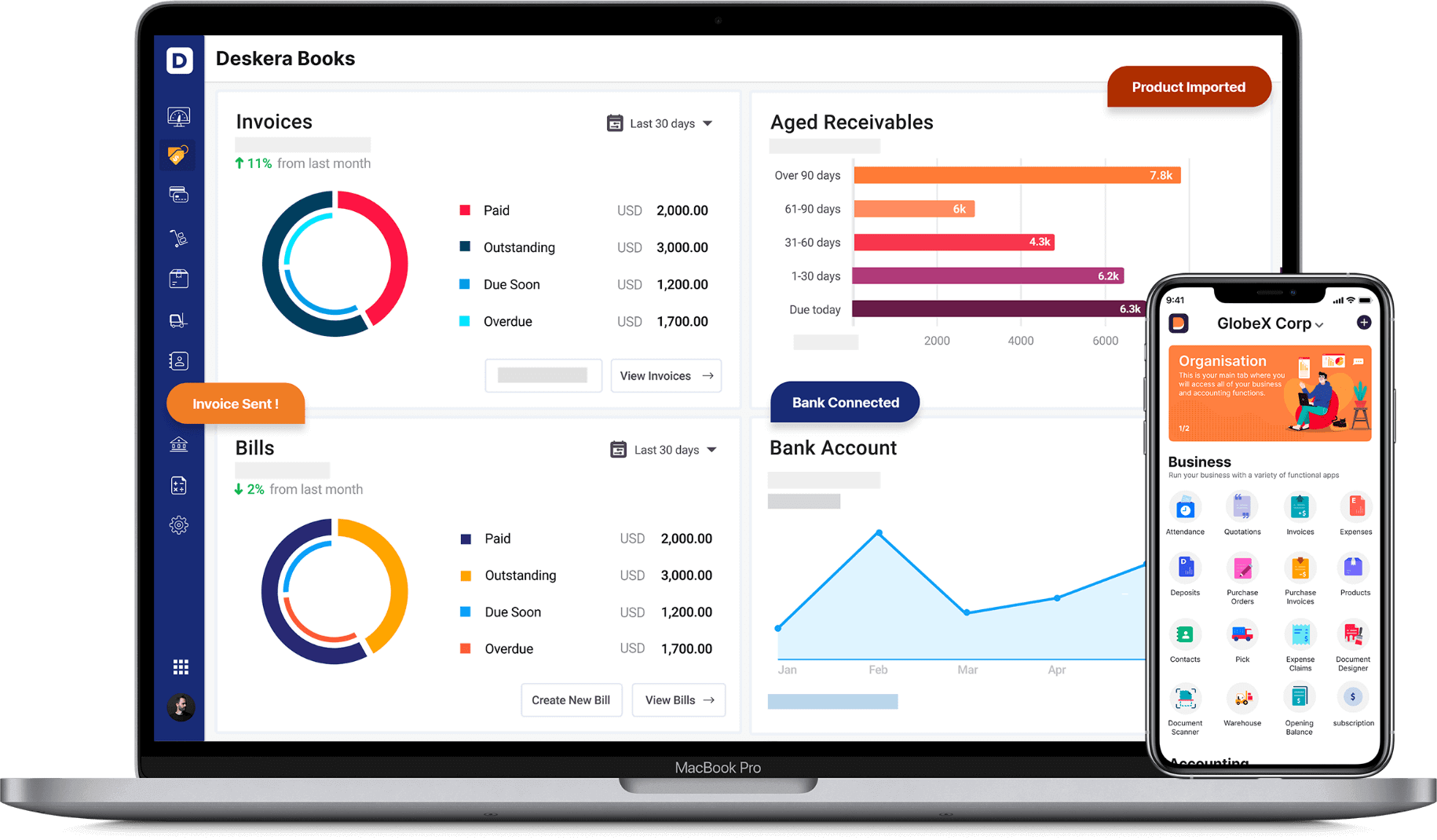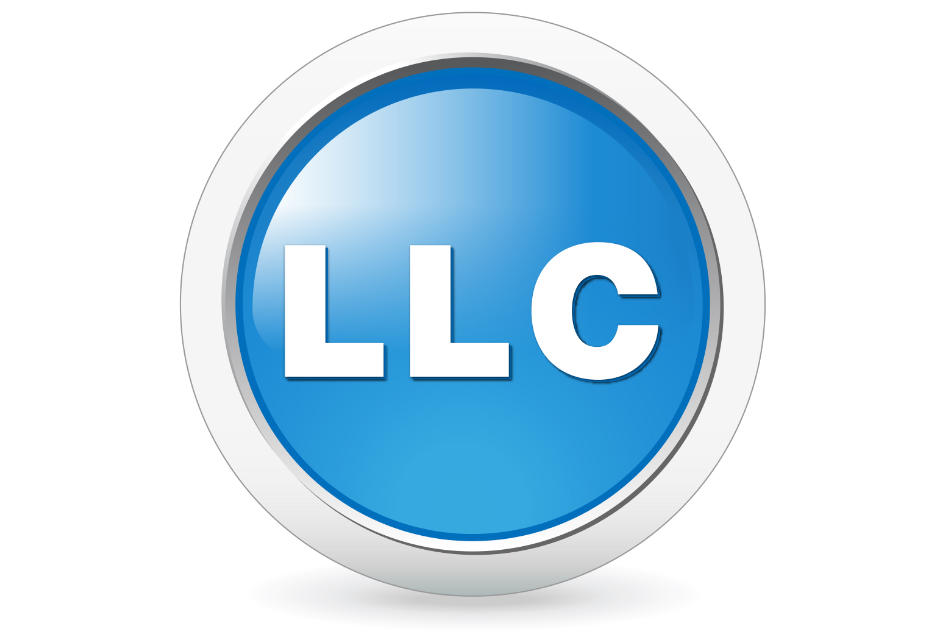With a gross state product of $3.16 trillion, the state of California has the largest economy in the United States. In fact, if California was a sovereign nation, then it would be the fifth-largest economy in the world.
There are 4.8 million micro-enterprises in California, which comprises 99.8% of all businesses in the state. These employ 48.5% of the private workforce, which is approximately 7.2 million people.
In fact, California is the largest and wealthiest state in the United States, with some of its major industries being technology (Silicon Valley). agriculture/farming, entertainment (Hollywood), as well as millions of small businesses.
Additionally, California is a hotbed for startups and top corporations and ranks #31 on the Forbes Best States for Business List. Some of the major companies based in California are Apple and Google, to name just two out of the several.

With the vast opportunities that California presents to all businesses, registering and starting a business in California is an attractive proposition for those of the entrepreneurial mindset and wanting to earn increasing and constant revenue, with most possibly high returns on investment and healthy financial statements.
However, California has complex state regulations and requirements of credit facilities that any and every business have to comply with and meet in order to become a registered business in California.
This article will take you through all the steps for registering your business in California and will thus cover the following 13 steps as well as other related areas to the topic:
- Step 1: Select Your Business Structure
- Step 2: Choose Your Business Name
- Step 3: Register Your Business
- Step 4: Obtain Your Federal Employer ID Number (FEIN)
- Step 5: Open Your Business's Bank and Credit Accounts
- Step 6: Set Up an Accounting System
- Step 7: Obtain Licenses and Permits
- Step 8: Register with the EDD
- Step 9: Hire Employees (if applicable)
- Step 10: Obtain Business Insurance
- Step 11: Organize and Systematize
- Step 12: Branding and Marketing
- Step 13: Annual and Ongoing Requirements
- How Can Deskera Help You?
- Key Takeaways
- Related Articles
Step 1: Select Your Business Structure
After your business plan is finalized, you should focus on selecting the structure of your business in California. While selecting a business structure, you should consult a private attorney or a tax advisor as she or he will be able to guide you through the requirements of each business entity and which one of them will meet your business needs. They will also inform you of the legal obligations that you need to fulfill before you are able to commit to a business structure.
Some of the major types of business entities available in California are:
- Corporation
- Limited Liability Company
- Limited Partnership
- General Partnership
- Limited Liability Partnership
- Sole Proprietorship
- DBAs
Out of these, Corporation or “Corp” is one of the popular business structures chosen by the businesses in California. It is a separate entity that provides liability protection to its owners. This business structure includes directors, shareholders, and officers. Though Corporation is a more complex business structure than the DBAs, it is an ideal choice for profit-earning companies. Some professions are required to form a “Professional Corporation” or PC like doctors, lawyers, architects, etc.
Another popular business structure chosen by businesses in California is LLC, which is a separate entity that provides liability protection to its owners. When compared with the Corporation structure, LLCs are easier to manage and are even taxed less. It is because of these two key features that LLC is often preferred over DBA as well as Corporation business structure.
DBA or Doing Business As or Fictitious Business Name or Trade Name is often used as an operating name to simplify the legal name or differentiate from other businesses with similar names. DBAs are also used to manage multiple businesses under one LLC or Corporation. For example, California Dreaming LLC could register a DBA like California Auto Spa for a car wash business and California Dreaming Classic Autos for a custom auto shop. By doing so, it will not have to go through the trouble of forming two separate LLCs or Corporations.
Note: To establish a sole proprietorship business in California, you are not required to file any organizational documents with the state.
The same is the case with general partnership businesses in California. However, it is recommended to have a written partnership agreement that would be helpful in case of disputes among the partners.
However, in the case of a limited liability partnership business in California, you will be required to file a registration with California's SOS.
Step 2: Choose Your Business Name
After businesses in California have chosen their business structure, they should focus on choosing their business name. Choosing a business name is a complex task as the wrong name can bring several legal and business problems at your threshold. While you can change your business name at a later date, it is easier the fewer times you do it.
Some of the steps you must fulfill for choosing your business name and before searching the California state databases for it are:
- Make sure you have covered the basics- Your business name should be easy to understand/pronounce while also being unique. It should be a representation of your intended brand positioning statement and should ignite customer interest and customer loyalty when said out loud or repeated. In fact, a unique yet easy-to-understand name is one of the keys to having a higher number of sales referral.
- Search the web- Once you have a few ideas for your name of the business in California, you should search the web for it. By using browsers like Google, DuckDuckGo, Bing, etc., you would be able to do the preliminary check for any potential conflicts, especially in your state or local jurisdiction. (Note: If your business in California is to operate nationally or even internationally, then it is even more important to have a unique business name. This should cover many cases where a company name is being used but not officially trademarked.)
- Do a trademark search- Using the US Patent and Trademark Office (USPTO), you should do a trademark search of the business name you prefer. This will be a very good indicator of whether your name has any conflicts or not. (Note: While doing a trademark search for the name of your business in California, you should also search for misspellings, plurals, variations of spelling, sound-alikes, and other versions of your chosen name to make sure that it is not already registered.)
- Make sure your company name choice is available- You can do this by searching the California Secretary of State’s business entity database. Here too, make sure to search for variations of spelling, misspellings, and plurals as the state may reject a name that is too similar to an already registered one. If this is the case, you would have to start your process of choosing the name of your business in California all over again.
Restrictions on California Business Name and Business Purpose
Some of the restrictions that California business names must adhere to are:
- Your company name must include the correct corporate identifier: like, Corporations should use “Corporation”, or “Incorporated” or an abbreviation suggesting the same.
- Your business name may not contain words like “bank,” “trust,” “trustee,” and shall not contain words such as “insurer” or “insurance company” or any other words suggesting that it is in the business of issuing policies of insurance and assuming insurance risks.
- The business purposes which will require the formation of a “Professional Corporation” or PC are:
Step 3: Register Your Business
Each state of the United States has its own specific requirements for registering a business. After you have chosen your business structure and business name, the requirements that you will have to fulfill to register your business in California are:
How to Form an LLC in California
To form an LLC in California:
- File Form LLC-1 (Articles of Organization) with the California Secretary of State LLC Division.
- Once the articles are filed and approved, you will need to properly organize the LLC, even if it is a “1 person LLC” by holding an “Organizational Meeting.” Through this meeting, contributions from the members will be taken, member certificates will be issued, the company operating agreement will be adopted, and many such decisions and documents will be prepared.
How to Form an Incorporate in California
- File Form ARTS-GS (Articles of Incorporation) with the California Secretary of State Corporation Division.
- Hold an “Organizational Meeting” to decide the percentage of ownership for each shareholder. In this meeting, tasks like opening a company bank account, paying back pre-incorporation expenses, electing an S-corporation state, and other such tasks would be resolved to be done.
- Corporations can elect S-corporation status with the IRS by filing IRS Form 2553.
Note: When registering a new company with California's Secretary of State, it can take several weeks to file the paperwork. One of the ways by which you can speed up this process is by getting your documents hand-delivered to them or to one of their field offices and also by paying additional fees.
How to File a DBA in California
DBAs are filed with the county, and to do so, you would have to contact your local County Recorder to find out the exact forms you need to submit as well as the submission process. To find your local county recorder’s office, search “YOUR COUNTY county recorder.”
- To register your DBA, obtain and file the correct forms with the count. (Note: Some counties let you search the name and register online. Others require the registration form to be notarized.)
- Publish a notice in an approved newspaper. The county would be able to guide you with the identification of approved newspapers. The notice’s publication frequency should be at least once a week for four consecutive weeks. After the fourth publication, the newspaper company should send you a Proof of Publication as a signed affidavit indicating dates of publication in their newspaper.
- Within 30 days after the fourth publication, you should file the Proof of Publication with the County Clerk’s Office.
Optional Considerations When Registering a Business in California
When registering a business in California, several people list their home or business address on the Articles of Organization, thereby becoming the victim of lots of junk mail as this address becomes a public record. To avoid such issues, you can hire a professional Registered Agent who will provide their address on the Articles of Organization and forward any important documents to you.
Having a registered agent is also convenient if you have to move someday, as you will not have to file forms or pay fees with the government. You would just have to update your address with your agent.
Step 4: Obtain Your Federal Employer ID Number (FEIN)
Your Federal Employer ID Number (FEIN) is like your Social Security Number for your company. The FEIN is mandatory if your business structure is Corporations and LLCs but optional in the case of DBA business structure unless you have employees, in which case it becomes mandatory.
However, if your business structure is DBA and you do not get your EIN, then you would be forced to use your social security number on several documents, making you vulnerable to identity theft. Thus, by getting your EIN, you would be able to prevent that.
Note: To obtain an EIN, you can apply online with the IRS or via IRS Form SS-4.
Step 5: Open Your Business's Bank and Credit Accounts
It is required that you keep your business and personal finances separate, and one of the ways of ensuring that is by opening a business bank and credit account. Corporations and LLCs are required to operate these types of accounts, but they position your company for favorable loans and lines of credit.
Typically, the documents that you will need to open your business bank account are:
- Filed paperwork
- EIN
- Company resolution signed by the owners, members, directors, officers, etc. that will authorize your company to open an account.
Step 6: Set Up an Accounting System
After fulfilling all the previous steps, you should set up an accounting and record-keeping system while also acquainting yourself with the taxes that are applicable to your business in California. This would depend on various factors like your business structure, the number of employees, the industry of your business, the revenue of your business, etc.
After locating your tax information, you should also file them. To do so, you should ensure that you have all the necessary paperwork for the following state and federal agencies and programs:
- California Franchise Tax Board (FTB)
- State Board of Equalization (BOE) to obtain a seller’s permit
- State of California Employment Development Department (EDD)
- Internal Revenue Services (IRS)
Generally, it is required that the company documents be kept for three years. This should also include a list of owners and addresses, copies of all formation documents, annual reports, financial statements, amendments, or changes to the company. In the case of tax and corporate filings, all of those documents should be kept for at least three years.
Note: If you are a sole proprietorship business in California, you will have to pay state taxes on your business income as part of your personal state income tax return and the tax bracket that you are a part of.
In the case of partnership business in California, partners will have to pay state taxes on partnership income on personal tax returns and as per the tax bracket that they fall in. Additionally, California partnerships will also have to file Form 565- Partnership Return of Income.
In the case of LLCs, their members will have to pay state taxes on their share of LLC income on personal tax returns. In addition to that, the LLC will also have to file an additional state tax form. Which specific form will be used by the LLC for the same will depend on its classification for federal tax purposes. LLC businesses in California are also required to file a biennial statement of information.
In the case of corporation business in California, the shareholders will have to pay state taxes on their dividends from the Corporation. A shareholder-employee with a salary will also have to pay state income tax on her or his personal state tax return. On top of it, the Corporation itself will be subject to California corporation taxes. Lastly, the corporations must file an annual statement of information with the California SOS. It’s also important to note that tax rules vary significantly between states. For example, SaaS are taxable in New York, while California treats most SaaS offerings differently. This makes it crucial for businesses operating in multiple states to stay updated on local tax laws.
Step 7: Obtain Licenses and Permits
Some of the businesses in California might need to obtain a license or a permit to get your company authorized to do business in your city or county. Usually, this also involves registering for state taxes and permits (the city may require them as part of the business licensing process).
If, however, you are unsure whether you are legally obliged to get a license or a permit and its requirements for your business in California, then you can resort to using the Gold Standard for Permit Assistance CalGOLD and the Department of Consumer Affairs.
Some of the common licenses and permits include:
- Business License
- California Seller’s Permit
- Alarm Permit
- Building Permit
- Tax Permit
- Health Permit
- Occupational Permit
- Signage Permit
- Zoning Permit
Note: Every business in California must obtain a general business license from the city where the business is located, and in the case of unincorporated sections of the state, from the county where the business is located.
Step 8: Register with the EDD
To register as an employer with the EDD, i.e., Employment Development Department, you will need the following information about your business:
- FEIN
- Business Type
- Legal Name
- DBA
- SoS Account Number
Once you are successfully registered as an employer, you will be assigned an account number known as the State Identification Number (SEIN) by the EDD, which will be unique to your business. The SEIN can then be used by you to file and pay your state payroll taxes in the future.
You would also be assigned an unemployment insurance tax rate by the EDD, which is a state-specific tax whose rates can change depending on your business’s employment history. For example, if lots of your former employees have filed a claim to collect unemployment insurance, then your tax rate for the same will increase.
Note: Some cities and counties in California require you to register for payroll as well. So make sure you check whether you are liable to comply with these needs or not.
Step 9: Hire Employees (if applicable)
If your business in California is also going to hire yourself or others as a full-time or part-time employee of your company, then you will need to register with the appropriate State Agencies or obtain Unemployment Insurance, or Workers Compensation Insurance, or both.
You should also consider getting group health insurance for your employees with guidance from a health insurance broker. Such company-sponsored employee benefits will reap benefits to your company in the form of being able to retain top talents, manage workplace stress, and have a lesser employee turnover ratio.
Step 10: Obtain Business Insurance
It is logical to have your business protected against unforeseen circumstances that can have detrimental effects on your business, its financial KPIs, and even on its revenue, with an increase in ratio of operating expenses over operating income.
To do so and save your business from such expenses, you should get business insurance. While there are many types of insurance for businesses, they are usually packaged as “General Business Insurance” or a “Business Owner’s Policy.” Such insurances can cover everything from product liability to company vehicles, thereby providing an extra level of protection.
Step 11: Organize and Systematize
Once you have gotten your business in California registered, you should organize and systematize it in such a way that even if someone is going to ruin it for you, they should face no difficulty.
Such an organization and systematization involves choosing the method to process orders, pay bills, carry out payrolls and pay employees, pay taxes, maintain your permits, ensure positive customer feedback and strong customer retention, deliver proactive customer service, and so on.
All of these aspects will help in making the operational aspect of your business as automated and efficient as possible while letting you focus more on growing and developing your business further.
Step 12: Branding and Marketing
Once your business in California is registered and set up, you should start focusing on spreading the word about your business to your potential customers. To do so, you need to make a marketing plan that will cover your branding and brand marketing efforts and different marketing strategies like content marketing, performance marketing, Instagram marketing, sustainable marketing, digital marketing, and other such forms of marketing which are in line with your brand image and marketing objectives.
Through your marketing efforts, you would be reaching your buyer personas and convincing them to buy your product or services. Successful branding and marketing campaigns can be ensured through regular monitoring of marketing KPIs and subsequent changes in marketing strategies. This will help in increasing your gross profit as well as your net profit and net profit ratio.
In fact, it might also help in improving your cash flow and making your financial statements like profit and loss statements, income statements, and balance sheets healthier. A branding and marketing campaign, when carried out properly, will also encourage returning customers and increase sales.
Step 13: Annual and Ongoing Requirements
Once your business in California is registered, some of the annual and ongoing requirements that you should keep in mind and comply with are:
- DBA- Your fictitious business name should be valid for five years (unless you change the company name or other information listed on the FBN), at which point you will need to renew it with the county.
- LLC- An Initial Statement of Information needs to be filed by Californian Companies within 90 days of filing articles of organization. Additionally, you must also file Biennial Statements of Information with the California Secretary of State biennially by the end of the month of your business’ anniversary, in addition to general taxation. California also requires a minimum $800 fee to the Franchise Tax Board each year; however, businesses in California get an exemption for the same in their first year in business. Lastly, depending upon the nature of your business, you might even have to get your license or permit renewed periodically.
- Corporation- Your business must keep its corporate records at its principal place of business. Once every two years, by the company’s anniversary date, an officer of your Corporation must file an annual report. LLCs and Corporations will pay a filing cost of $300.
How Can Deskera Help You?
Deskera Books is cloud-based, online accounting software designed to manage and automate business finance transactions invoices, bills, inventory, bank connect, approval flows, reporting, and taxes, to mention a few core features.

Deskera Books will do all the heavy lifting for you, like managing your chart of accounts, journal entries, and general ledgers, while letting you focus on running your business. One of the key features of Deskera Books is that it comes with pre-configured accounting rules, tax codes, and invoice templates, among many other things.
In fact, even setting up your business in Deskera Books is easy as you will have to sign up using your email address or social authentication account. Even your accountant can use the system once you have invited them to do so through their email address.
Key Takeaways
Registering a business in California is a long and tedious process, but once you know all the steps and requirements for the same, along with a good team to help you, which also includes a legal and financial advisor, you would be good to go.
Remember, getting your business registered correctly is the key to permanently sorting out one of the major aspects of your business and even setting up a base for its growth, development, and success.
However, there are some aspects that will require periodical renewals like licenses or submission of information to the relevant state authorities like tax filings. This can get tedious, but having software like Deskera Books which largely automates accounting, auditing, and tax compliance, will greatly help you.
So, what are you waiting for? Get your business in California registered by using this article as your guide, and pursue your aspirations.
Related Articles















